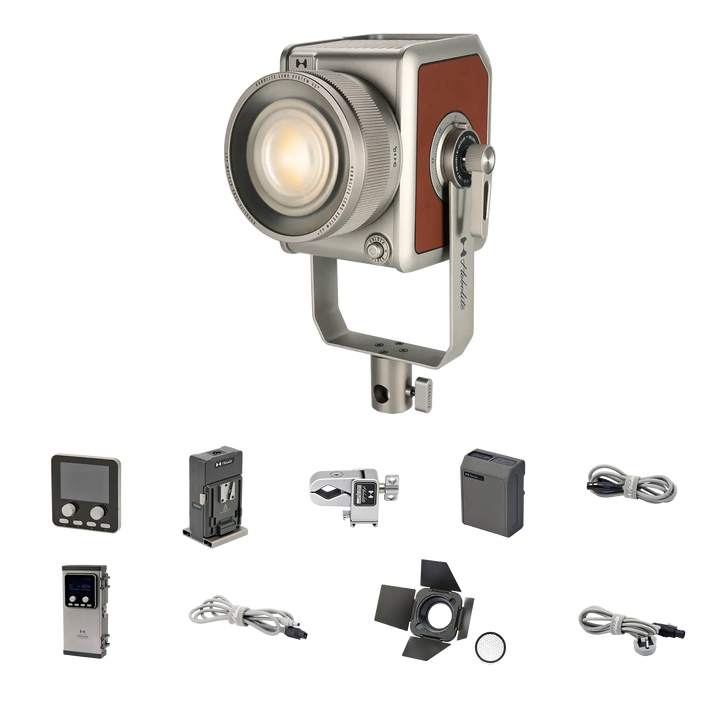Unlock the Secrets to Stunning Photos with the Perfect Studio Lighting!
Studio lighting is the backbone of professional photography, playing a pivotal role in transforming ordinary images into breathtaking visuals. Whether you're capturing portraits, products, or creative compositions, the right lighting can enhance the mood, highlight details, and create a captivating atmosphere. Properly executed lighting can elevate your photography, bringing an artistic touch that captivates viewers. In this article, we’ll explore various types of studio lighting photography equipment, understand their unique applications, and provide insights on how to find and purchase the right gear to suit your photography needs.

Understanding Studio Lighting Basics
To begin, it’s essential to grasp the fundamentals of studio lighting. Key concepts include light direction, intensity, and quality. Light direction refers to where the light source is placed relative to your subject, which can dramatically alter the appearance of images. Intensity deals with the brightness of the light, influencing how shadows and highlights are rendered. Quality refers to whether the light is hard or soft. Hard light creates sharp, defined shadows and is great for emphasizing texture, while soft light diffuses shadows, resulting in a more flattering and gentle illumination. Understanding these elements will help you manipulate light to achieve desired effects in your photography.
Types of Studio Lighting Equipment
When it comes to studio lighting, there are several types of equipment to consider. Continuous lights, for instance, provide a constant light source, allowing photographers to see how the light interacts with the subject in real-time. This is particularly useful for beginners who are still learning about lighting techniques. On the other hand, strobe lights emit short bursts of light, which can be incredibly powerful and ideal for freezing motion, making them popular in fashion and sports photography. LED panels have also gained popularity for their versatility and energy efficiency. They offer adjustable color temperatures and can be used for both video and photography, making them a great investment for those involved in multiple forms of media. Each type of lighting equipment has its unique features and ideal use cases, so evaluating your specific needs is crucial.
Modifiers and Accessories
To further enhance the quality of light in your studio, consider investing in modifiers and accessories. Softboxes are a popular choice for creating soft, diffused light that wraps around the subject, reducing harsh shadows. Umbrellas can also be used to soften light while being highly portable. Reflectors are essential for bouncing light back onto the subject, filling in shadows without the need for additional lights. Additionally, accessories like light stands and power packs are vital for setting up a stable lighting arrangement and ensuring you have enough power for your equipment. These tools can significantly impact the overall quality of your images, so understanding their functions is key.
Setting Up Your Studio Lighting
Setting up your studio lighting effectively depends on the type of photography you are pursuing. For portrait photography, positioning the main light at a 45-degree angle to the subject often produces flattering results, while a fill light can help soften shadows. In product photography, overhead lighting combined with reflectors can ensure even illumination, highlighting the product's features without creating unflattering reflections. For fashion photography, a combination of hard and soft light can create dramatic effects, emphasizing textures and forms. Experimenting with different arrangements and lighting ratios will help you discover what works best for your style and subjects.
Finding and Purchasing Studio Lighting Equipment
When it comes to finding suitable studio lighting equipment, several considerations should guide your decisions. First, assess your budget and specific needs. High-quality lighting gear can vary significantly in price, so determining how much you're willing to invest will help narrow down your options. Next, research various sources for equipment—online marketplaces, local photography stores, and rental shops often have a range of options. Look for reviews and testimonials to gauge the quality and reliability of the equipment. Additionally, consider attending photography workshops or expos where you can test lighting gear firsthand. This will provide invaluable insights that can help inform your purchasing decisions.
Mastering Studio Lighting for Photography Success
In conclusion, mastering studio lighting is essential for any photographer looking to enhance their skills and achieve stunning results. From understanding the basics to exploring different types of equipment and their applications, each element plays a vital role in the photographic process. By investing time in learning about studio lighting and selecting the right gear, you can elevate your photography to new heights. So, take the plunge, explore your options, and invest in the right equipment to unlock your creative potential!








